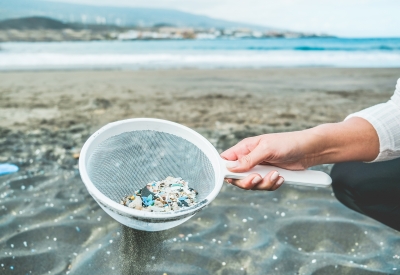
Microbeads are small, solid, manufactured plastic particles that are less than 5mm in diameter and do not degrade or dissolve in water. They may be added to a range of products, including rinse-off cosmetic, personal care and cleaning products. Microbeads are a relatively cheap ingredient and are used in these products for a variety of purposes. This includes as an abrasive or exfoliant, a bulking agent, to prolong shelf-life, or for the controlled release of active ingredients.
Microbeads are not captured by most wastewater treatment systems. If washed down the drain after use, they can end up in our rivers, lakes, and oceans. These tiny plastics persist in the environment and have a damaging effect on marine life, the environment and human health. This is due to their composition, ability to adsorb toxins and potential to transfer up the marine food chain. The best way to reduce the impact of microbeads is to prevent them from entering the environment in the first place.
Further research needs to be conducted to determine how damaging the beads are for marine life, but current evidence suggests that sea-dwelling creatures at the bottom of the food chain are ingesting the plastic. It is possible that this has wider implications across our food chain as a whole. The fear surrounding marine microplastic pollution has led to a cross-party Environmental Audit Committee warning that increasing amounts of damage to sealife can lead to potential harm to human health, as a result of plastic being ingested and accumulating in marine life such as mussels and oysters.
Picture Credit : Google




